Occupational Safety Training in Water Heater Manufacturing
99,000 ₫
Note: The above price is calculated for one person, the price may fluctuate depending on the number of trainees participating in the course and depending on market movements. For more accurate pricing support, please refer to the quotation table or contact our consulting staff directly.
Occupational safety is an important issue in water heater manufacturing factories and needs to be addressed promptly to ensure the health and safety of workers, and to enhance the reputation of businesses. The Occupational safety training course is one of the effective solutions to raise awareness about accident prevention for workers participating in water heater manufacturing.
Table of Contents
Toggle1. Overview of Water Heater Production
a. What is a water heater?
A water heater is a type of device used to produce hot water, commonly for bathing or other purposes such as dishwashing or laundry. Water heaters are usually installed in bathrooms or kitchens and use electricity to heat the water. There are various types of water heaters on the market, including electric, solar-powered, or fuel-based such as gas or oil.

b. Machinery used in water heater production
The production of water heaters involves multiple technological steps and various machines. Some key machines used in water heater production include:
- Metal cutting and processing machines: These machines are used to cut and shape metal parts and connect them to form components of the water heater.
- Metal welding, bending, punching, and shaping machines: These machines are used to join metal parts or bend metal rods into required shapes.
- Plastic molding machines: These machines are used to mold plastic components and assemble them to form parts of the water heater.
- Metal stamping and pressing machines: Used to stamp and press metal components into required shapes and assemble them for water heater production.
- Electronic assembly machines: Used to assemble electronic components, program, and test the functionality of electronic parts in the water heater.
- Printing machines: Used to print labels and user instructions on the surface of water heaters.
- Testing machines: Used to check the components and functionality of water heaters before they are released to the market.
Depending on the scale and technology of each factory, different types of machinery may be used in water heater production.

c. Water heater manufacturers in Vietnam
Here are some well-known water heater brands in Vietnam:
- Ariston: One of the leading brands in the water heater industry, offering a variety of products with advanced technology, smart features, safety, and energy efficiency.
- Ferroli: Known for high-quality water heaters with diverse sizes, designs, and capacities to meet customer needs.
- Rinnai: With over 45 years of manufacturing experience, Rinnai is trusted by customers for its convenient, safe, and well-designed water heaters.
- Panasonic: Besides home appliances, Panasonic also produces water heaters with smart, safe, and energy-efficient features.
- AEG: A leading home appliance brand, AEG produces water heaters with appealing designs, convenience, and safety features.
- Electrolux: With years of experience in home appliance production, Electrolux also offers water heaters that are high-quality, safe, and well-designed.
- Ferro: A German brand providing water heaters with smart, convenient, and safe features.
- Haier: Well-known for home appliances, including water heaters with attractive designs, safety, and energy-saving features.
These are just some of the prominent water heater brands in Vietnam, and there are many other high-quality brands trusted by customers.
d. Specific jobs in a water heater production factory
Group 1
- Chief Executive Officer, Deputy CEO, and department heads in the water heater production factory.
Group 2
- Safety officers: Manage safety in the factory, design safety procedures, supervise, and ensure employees comply with safe working procedures.
Group 3
- Fabrication: Responsible for producing the necessary components and parts for assembling water heaters.
- Assembly: Workers assemble components to produce complete products.
- Quality control: Products are inspected to ensure they function properly and meet safety and quality standards.
- Packing: Products are packed for shipping to distributors and customers.
- Maintenance and repair: When customers experience issues, maintenance teams perform necessary repairs to ensure the products operate correctly.
Group 4
- Office, support, sales, and marketing jobs.
- Production management, quality management, human resources management, material management, and finance/accounting management.
- Design: Designers create technical drawings and prototypes for products.

2. Overview of Occupational Safety Training for Water Heater Production
In this article, we focus on Group 3 because Group 3 is directly involved in production and faces the highest occupational safety risks. See other groups here.
a. What is Group 3 occupational safety training?
- Group 3 occupational safety training consists of courses that equip workers with knowledge on preventing workplace accidents.
- Safety training helps workers recognize hazards and avoid risks, minimizing accidents during work.
REGISTER FOR OCCUPATIONAL SAFETY TRAINING
b. Training duration
Initial safety training duration
- Total training time is at least 24 hours, including testing time.
- 8 hours of theory on policies and laws on occupational safety and hygiene
- 8 hours of theory on basic occupational safety and hygiene knowledge
- 4 hours of theory on specialized training content
- 2 hours of practical training on specialized content
- 2 hours of final theoretical test
Training centers schedule sessions depending on worker availability. Typically, there are 6 sessions over 3 days, assuming the company arranges continuous learning time.
Periodic safety training duration
- Before the occupational safety card expires, workers must undergo periodic training to renew the card, with periodic training duration at least 50% of the initial training time.
Note: Total periodic training duration is at least 12 hours, including testing. After completing and passing the test, workers are reissued an occupational safety card.
c. Training content
| No. | TRAINING CONTENT | TRAINING DURATION (HOURS) | |||
| Total | Including | ||||
| Theory | Practice | Test | |||
| I | Policies and laws on occupational safety and hygiene | 8 | 8 | 0 | 0 |
| 1 | Overview of legal documents on occupational safety and hygiene. | 6 | 6 | ||
| 2 | System of safety and hygiene standards and regulations. | 1 | 1 | ||
| 3 | Specific regulations of state authorities regarding safety and hygiene when constructing, expanding, or renovating facilities, and using or maintaining machinery and hazardous materials. | 1 | 1 | ||
| II | Basic occupational safety and hygiene knowledge | 8 | 8 | 0 | 0 |
| 1 | Basic knowledge of hazards and harmful factors in the workplace. | 4 | 4 | ||
| 2 | Methods to improve working conditions. | 1 | 1 | ||
| 3 | Safety culture in production and business. | 1 | 1 | ||
| 4 | Rights and obligations of employers and employees; occupational safety policies; functions of safety officers. | 1 | 1 | ||
| 5 | Safety regulations, signs, use of personal protective equipment; first aid skills; occupational disease prevention. | 1 | 1 | ||
| III | Specialized training content | 6 | 4 | 2 | 0 |
| Comprehensive knowledge of machines, equipment, hazardous substances; risk assessment and management; safe procedures for working with machinery, equipment, and hazardous materials. | 6 | 4 | 2 | ||
| IV | Final safety training assessment | 2 | 2 | 0 | 0 |
| Total | 24 | 22 | 2 | ||
See more training content of all 6 groups
d. Occupational safety card
After completing the occupational safety training and passing the test, the worker will receive an occupational safety card (commonly referred to as Group 3 safety certificate).
The card shows personal information such as name, date of birth, job, work environment, training duration, official stamp, and signature confirming course completion.
According to Clause 2 of Article 24 of Decree 44/2016/ND-CP, there are two cases:
- If the employer and employee have a labor contract, the employer must sign, stamp, and authenticate the occupational safety card for Group 3 trainees after they complete the course and pass the test.
- If the worker is freelance or temporary, without a labor contract, the training unit must sign, stamp, and authenticate the occupational safety card after course completion and passing the test.

3. Recognizing Hazards Affecting Workers in Water Heater Production
Potential hazards in water heater production may include:
- Electrical hazards: Workers may suffer electric shocks if they do not follow electrical safety regulations during assembly and testing of electronic components.
- Mechanical hazards: Production machinery may cause cuts, punctures, or impact injuries if not used properly and maintained regularly.
- Chemical hazards: The production process may involve toxic chemicals, such as cleaning agents or adhesives, posing risks to workers’ health.
- Noise hazards: The production process may generate high noise levels, which can harm workers’ hearing.
- Lighting hazards: Lights used during production may emit strong light, causing eye strain or damage if not properly protected.
4. Common Occupational Accidents for Workers in Water Heater Manufacturing
Common occupational accidents that may occur during water heater manufacturing include:
- Chemical poisoning: During water heater manufacturing, chemicals such as detergents and solvents may be used to clean machine components. Prolonged exposure or inhalation of these chemicals can cause chemical poisoning.
- Machinery accidents: Machinery in hot water heater factories can cause accidents during operation, such as hand entrapment or collisions. Workers need to follow safety procedures when using machinery and wear full protective equipment to reduce accident risks.
- Injuries from heavy lifting: Employees in hot water heater factories may need to lift and transport heavy machine components. Prolonged lifting can cause muscle strain injuries or spinal disc injuries.
- Fire and explosion: The use of electrical and gas equipment during water heater manufacturing can create fire and explosion hazards if safety procedures are not followed.
- Airbag-related accidents: Hot water heaters may use airbags to control water pressure and temperature. Improper handling of these airbags can cause accidents.

5. Safety Measures for Participation in Water Heater Manufacturing
Safety measures for participating in water heater manufacturing include:
- Ensure proper use of personal protective equipment: Employees must use full personal protective equipment such as helmets, safety glasses, masks, long sleeves, gloves, and safety shoes to protect the body and avoid risks at work.
- Occupational safety training: Companies should organize training courses to equip employees with knowledge of occupational safety and awareness of potential hazards during water heater manufacturing.
- Regularly inspect equipment: Manufacturing equipment and personal protective equipment must be periodically checked to ensure they function effectively and meet safety standards.
- Follow safe working procedures: Employees need to adhere to safe working procedures during water heater manufacturing, including proper use of equipment, hygiene and safety principles, and emergency handling procedures.
- Design safety features for production lines: Companies should ensure hot water heater production lines have safety features, including automatic power cut-off mechanisms, hand protection, impact resistance, and insulation components.
- Control materials and chemicals: Companies must ensure materials and chemicals used during manufacturing meet safety standards and do not endanger employees.
- Manage safety risks: Companies must assess and manage safety risks to protect employees and prevent occupational accidents during water heater manufacturing.
- Periodically conduct occupational environment monitoring in factories, collect and analyze harmful factors for workers, and adjust to reduce hazards to prevent occupational diseases.
6. Benefits of Occupational Safety Training for Water Heater Manufacturing
An Toan Nam Viet provides enterprises with the following benefits upon completing occupational safety training courses according to Decree 44/2016/ND – CP on occupational safety and hygiene:
- Workers can recognize potential occupational accident risks and take preventive measures to avoid accidents.
- Enterprises can establish risk prevention measures in production, operation, and maintenance processes.
- Reduce costs associated with safety hazards in the workplace.
- Continuous production without interruptions helps increase labor productivity and product quality.
- Compliance with labor safety laws, avoiding legal risks.
- Enhances credibility and professionalism in all aspects, thereby elevating the company’s brand.
An Toan Nam Viet’s training courses are solutions to prevent external hazards from affecting individuals, helping them avoid dangers that could lead to injury or, in severe cases, death.
REGISTER FOR OCCUPATIONAL SAFETY TRAINING
7. Customer Feedback after Completing Occupational Safety Training for Water Heater Manufacturing
An Toan Nam Viet has years of experience accompanying many businesses in Vietnam in general and in southern provinces in particular. This responsibility is extremely valuable to us, which is why An Toan Nam Viet’s occupational safety training is increasingly professional. Our growth motivation comes from both positive feedback and suggestions from business partners. Below are some testimonials from clients we have served.
Hoa Dat Construction and Trading Joint Stock Company
“An Toan Nam Viet’s service has greatly simplified occupational safety and the process of completing safety documentation for our work. Their consultants are timely and enthusiastic in responding to our questions. 5 stars for An Toan Nam Viet.”
See more customer interviews after using services of An Toan Nam Viet
8. Occupational Safety Training Capacity of An Toan Nam Viet
An Toan Nam Viet is a reputable and high-quality occupational safety training center in Vietnam. Our training sessions are continuously conducted at factories, workshops, or construction sites across all 63 provinces in Vietnam.
REGISTER FOR OCCUPATIONAL SAFETY TRAINING
Occupational safety training license
- An Toan Nam Viet has been inspected and certified by the Department of Occupational Safety of the Ministry of Labor – Invalids and Social Affairs, certifying our eligibility to operate occupational safety training. This reinforces our capacity to provide occupational safety training.

Materials and lectures
- Before being used in occupational safety training courses, training materials are reviewed to ensure accuracy and practical effectiveness.
- Our instructors’ teaching methods follow An Toan Nam Viet standards, researched and refined by experts in occupational safety and hygiene training to maximize learners’ comprehension.
Facilities
- Controlling classroom factors affects training efficiency and learners’ knowledge absorption.
- Our training facilities provide spacious classrooms meeting standards for area, lighting, and training equipment.
9. Nationwide Reputable Occupational Safety Training Center
At An Toan Nam Viet, we prioritize professional occupational safety training. Teaching workers to protect themselves ensures their safety while contributing to the country’s development.
We carefully prepare all details to ensure training efficiency, from tools and teaching equipment to curriculum, documents, audio, and lighting.
Our instructors are experts with years of experience. Some even have research projects identifying hazards in all industries and methods to prevent them.
Lectures are practical, lively, and easy for workers to understand, ensuring effective learning while adhering to Decree 44/2016/ND-CP.
Thus, workers learn hazard prevention methods and self-protection skills, applying them effectively in real work situations.
Our training center proudly offers professional and reliable occupational safety training with advantages:
- Competitive training fees with guaranteed quality.
- Flexible training schedule aligned with company production.
- Fast, legally compliant certification procedures.
- Experienced instructors with years of practice.
- Classrooms optimized for training efficiency and knowledge absorption.
- Lectures tailored to occupational safety at businesses.
- An Toan Nam Viet provides dedicated and professional support to clients promptly and accurately.

10. Additional Reference Materials for Occupational Safety Training in Water Heater Manufacturing
- Occupational safety materials for water heater manufacturing
- Complete occupational safety training materials
- Occupational safety training test materials
- Occupational safety training syllabus for water heater manufacturing
- Occupational safety multiple-choice test for water heater manufacturing
1 review for Occupational Safety Training in Water Heater Manufacturing
No comments yet

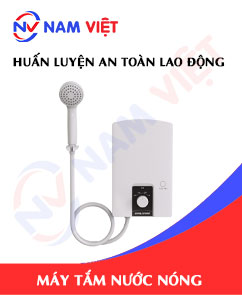
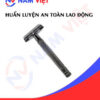
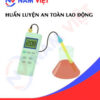





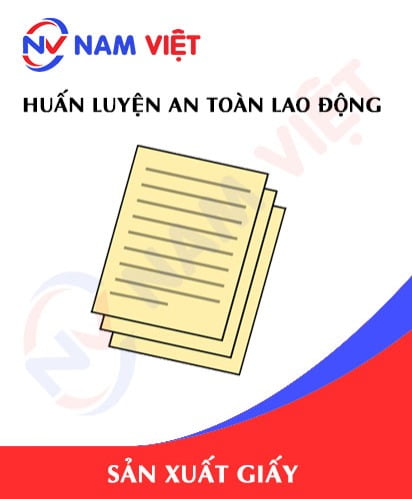




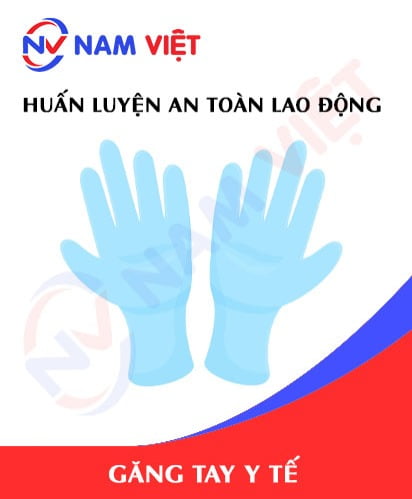
namchinh.haiphong341
Đơn vị an toàn lao động uy tín tại Việt Nam nhé!